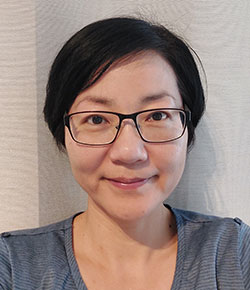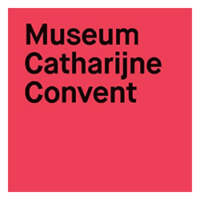HOME > VISITING > STUDY DAY ‘GOLD’ > QING WU

Qing Wu

Qing Wu studied for her BA and MA in Art Conservation at the Bern University of the Arts, Switzerland, specializing in painting and sculpture. During her BA, she worked as an intern in the Bavarian Administration of State-Owned Palaces, Gardens and Lakes, restoring the gilding system of a crown chair of Lugwig II. Her PhD investigated medieval gilding systems with a focus on Zwischgold at the University of Zurich, in collaboration with the Paul Scherrer Institute (PSI), Switzerland, and the Swiss National Museum (SNM). After her PhD, she worked as a research assistant at the Cologne Institute of Conservation Science, Technical University of Cologne, Germany, involving in a project of painting authenticity evaluation and providing analytical support for students’ projects. She is now using her skills in the intersection of art conservation and materials analysis as a post-doc at the Haute École Arc, University of Applied Sciences and Arts Western Switzerland, to develop green methods for silver cleaning in the “GoGreen” EU project.
She is skilled in analysis and sample repreparation via SEM-EDX, XRF, FTIR, Raman, OM, colorimetry and ultramicrotomy, and has experience in the application of advanced analysis techniques such as ion beam analysis, synchrotron techniques, interferometric microscopy and FIB-SEM. She has published a number of articles about medieval gilding systems in peer-reviewed journals and given oral and poster presentations in international conferences (e.g., ICOM-CC, Technart), workshops and research seminars.
Purchase your tickets online!
Book your tickets quickly and easily online.
About the lecture
Scientific analysis of medieval Zwischgold and gold leaf: application, technical features, colour and corrosion.
As the climax epoch for altars and altar sculptures, the late Middle Ages exhibited exquisite art technologies and complex materials in gilding. Of the medieval gilding systems, Zwischgold is a special metal leaf made from a gold layer atop a silver base. It is notoriously difficult to unambiguously identify and to study in detail, due to the fact that it is often hidden below surface coatings like coloured glazing, and that most extant Zwischgold artefacts nowadays show complicated corrosion states, due to the vulnerability of its silver base against invasive species in environments. This could be one of the main reasons why Zwischgold is strictly controlled or instructed by medieval guilds (another is its capability of being fraudulently substituted for gold leaf). In contrast to its high occurrence in guild regulations, the application, materials, production, technical specification of Zwischgold are seldom mentioned in medieval artists’ treatises.
Although Zwischgold is nowadays commonly viewed as an economical substitute for gold leaf, arguments regarding its functions have circulated for decades. Through the on-site handheld X-ray fluorescence (HHXRF) measurements of a large number of objects collected by the Swiss National Museum, Zwischgold has been identified in extremely diverse areas. This non-invasive analysis provides objective evidence showing that the reasons for medieval Zwischgold application are not limited to cost-saving but include other factors.
Further materials analysis techniques such as scanning electron microscopy coupled with energy dispersive X-ray (SEM-EDX) were implemented on Zwischgold samples taken from the objects identified through HHXRF. The output of the measurements provides important technological features of Zwischgold, including its leaf structure, thickness and materials compositions. It is observed that medieval Zwischgold contains ultra-thin gold layers in a main thickness range of ca. 20–50 nm, indicating the employment of high-precision technologies in the manufacture of delicate art materials of that time. It further clarifies some ambiguity in gilding history, regarding the colour appearance of Zwischgold. .
Apart from the normal leaf structure of a gold layer atop a silver base, medieval Zwischgold also presents structures including multiple gold-silver pairs or two gold layers with one silver layer in between, like a sandwich. Multi-layered structures have also been observed on the gold leaf samples taken from the same batch of objects.
The corrosion of Zwischgold is a long-standing, troublesome issue for researchers and conservators. In addition to the unpleasant appearance of corroded Zwischgold, e.g., surface darkening, it could also cause issues regarding the mechanical stability of the gilding systems. A gap that is often observed between the gold layer of Zwischgold and the underneath substrate could be an indicator.
The investigations of the gold leaf samples show that medieval gold leaf is thicker but with higher gold content than the modern one. Based on this outcome and supported with colour measurements of gold leaf models with different substrates, reasons that leading to the colour appearance of medieval gilded objects are given.
Purchase your tickets online!
Book your tickets quickly and easily online.
SPLENDID HOSPITALITY
Give your guests a royal welcome at Huis Bergh Castle in ‘s-Heerenberg, with flags flying, a royal reception on the drawbridge and a warm welcome in the majestic entrance hall.



